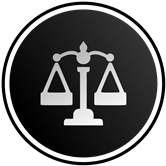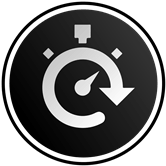Updated on November 01, 2025 05:33:18 PM
Copyright registration is often confused with terms like Trademark and patent. A trademark registration protects brand names, logos, and symbols while the patent is for inventions or new technological processes. Copyright protects original works of authorship including books, music, art, and software. Registering your copyright under the Copyright Act 1957 provides you with assurance that nobody can misuse what belongs to you. It gives you the power to protect, control, and profit from your creations while keeping unwanted hands away.
In this article, you will get to know the essential documents you must have when you are trying to get a copyright and the procedure involved in copyright registration. It is a complicated process, but at Litem Legalis we make it easy for individuals and businesses to register their copyright and protect their intellectual property. Before we delve into the process of copyright registration, let's briefly examine what is copyright and then discuss why registration of copyright is important.
Copyright is a legal right given to the creator of their intellectual property. It has application in relation to an original work of authorship. The rights ensure the creator or any other authorized person can reproduce, distribute, and even display the work. Copyright grants that the creator has an exclusive privilege to use or license his or her work for a given period—it is 60 years in India. Upon the expiry of this term, the work would fall into the public domain. The primary objective of this law is to protect the effort of the creator so that others could not just freely copy or make a profit of it unless they had the creator's permission. It is important to protect the value of the creator’s intellectual labor.
The process of applying for copyright registration in India is governed by Section 45 of the Indian Copyright Act, 1957, read with Rule 70 of the Copyright Rules, 2013. Creators or rights holders can apply either through the online e-filing portal or by physically submitting their application at the Copyright Office. Here is a step-by-step procedure of copyright registration application.
Draft an application in Form XIV, providing all necessary details and a statement of particulars about your work. Ensure that you submit separate applications for each work.
The application must be signed by both the applicant and an advocate, who must hold a Vakalatnama or Power of Attorney (POA).
Submit the application along with the required fees, which vary depending on the type of work. Fee details are available on the Govt Fee Details
Upon submission, the Registrar will assign a Diary Number, marking the commencement of the process. There is a mandatory 30-day waiting period during which objections can be raised against your application.
If no objections are received within the 30-day window, the scrutinizer examines the application for discrepancies. If all criteria are met, the application moves forward.
If objections are raised, both the applicant and the objector are notified, and a hearing is scheduled to resolve the issues.
After the hearing (if required), the scrutinizer re-examines the application, considering any resolved objections. If the application is found to be satisfactory, it proceeds to the next stage.
Once the application is approved and all required fees are paid, the Registrar issues the Copyright Registration Certificate, officially granting copyright ownership. The process typically takes around 2 to 3 months, depending on whether objections are raised.
To register your Copyright successfully in India, specific documents are required based on the type of work. Below is a categorized overview for easy reference
| Type of Work | Documents Required |
|---|---|
| Artistic Work |
Two copies of the work. Fee payment via DD/IPO. NOC from the author (if the applicant isn't the author). NOC from the publisher (if applicable). Search Certificate (TM-60) from TMC (if the work is used on goods). NOC from the person (if portrait). Power of Attorney (if applicable). |
| Cinematograph Film |
Two copies of the film. Fee payment via DD/IPO. NOCs from copyright holders or a copy of the agreement. Power of Attorney (if applicable). |
| Musical Work |
Two copies of graphical notes. Fee payment via DD/IPO. NOC from the author and publisher (if they aren’t the applicant). Power of Attorney (if applicable). |
| Literary and Dramatic Work |
Two copies of the work. Fee payment via DD/IPO. NOC from the author and publisher. Original, signed Power of Attorney. |
| Sound Recording |
Two copies of the recording. Fee payment via DD/IPO. NOCs from copyright holders or a copy of the agreement (deed of assignment). NOC from the publisher (if applicable). Power of Attorney. |
| Software |
Two copies of the software. Fee payment via DD/IPO or e-filing. NOC from the author (if different from the applicant). NOC from the publisher. Power of Attorney. Source code and object code for verification. |
The cost of copyright registration varies based on the type of work. Below is a breakdown of the fees applicable:
| Type of Work | Fee (INR) |
|---|---|
| Literary, Dramatic, Musical, Artistic Works | ₹500 per work |
| Cinematograph Films | ₹5,000 per work |
| Sound Recordings | ₹2,000 per work |
| Software (Computer Programs) | ₹5,000 per work |
| Copyright Assignment | ₹5,000 per work |
| Copyright License | ₹2,000 per work |
If you are unsure about registering your copyright, you are not alone. Most creators have second thoughts because they do not understand the benefits of copyright registration. Without registration, you stand at the risk of losing control over your work and letting others exploit it. In this section, we will outline the critical benefits of registration and address the concerns holding you back.
Securing copyright registration in India provides creators with essential legal protection and enables them to use the copyright symbol (©). This symbol serves as a public declaration, notifying others that the work is protected under copyright law. It plays a critical role in deterring unauthorized reproduction, distribution, or misuse of intellectual property.
By displaying the © symbol, creators align their works with international agreements such as the Berne Convention, which emphasizes the importance of copyright notices even though registration isn’t always required for protection.
In India, copyright ownership is granted various rights that allow creators to control, secure and commercialize their intellectual property efficiently. This includes:
The timeline for copyright registration involves four key steps, each with an estimated duration, from application submission to certificate issuance. Here's a quick visual breakdown
| Step | Estimated Timeframe |
|---|---|
| Application Submission | 1 Day |
| Examination of Application | 2-4 Weeks |
| Objection Resolution | 1-3 Months (if needed) |
| Certificate Issuance | 4-10 Months |
If you want to take steps to stop other people from stealing or misusing your creative work, then registering your copyright would be the best way. Copyright registration is the legal proof of ownership for a particular piece of work and provides you with exclusive rights to control, copy, and distribute your work. That means you decide how your creation is used, and in the event of copyright infringement, you are able to take action through the courts.
To make the process more systematic, the Registrar of Copyrights divides creative works into six different categories. By registering your work in the appropriate category, you get the work to be appropriately protected under the copyright laws. Here are the six categories:
Copyright Registration in India is a Lawful process that aids to prevent the legal authority of a creator. Through Copyright Registration in India, the creator can enjoy several benefits such as legal protection, public notice, infringement lawsuits and many more. However, the applicant must be very careful regarding the registration process. There are mainly four steps of Copyright Registration in India including filing the application, objection process, examination and registration. During this process, there are many stages where the applicant may face rejection.
Therefore the applicant must file the appropriate documents and information during the Copyright application filing. The applicant must also consult with the professional, so they can decrease the chances of objection and rejection.
Copyright Registration in India is a crucial tool for securing a creator’s creations. There are many chances to face rejection, therefore the applicant must have correct guidance through which the Registration can be done easily. Here the Litem Legalis can be your best choice as an attorney.
Litem Legalis is a team of professional lawyers with years of experience who believe to provide the best service to the customers. If you are also looking to register a Copyright, connect with us for hassle-free and easy Registration.

Legal Consultation

Expert Lawyers

Lowest Fees

Quick Process
The copyright registration process involves filing an application while paying the necessary fees and submitting all appropriate documents.
The duration of obtaining a copyright certificate usually ranges between 8 and 12 months when applications face no objections or errors.
Yes, you can transfer your copyright through written assignment or license agreements which should then be filed with the Copyright Office for registration.
When someone replicates your work without authorization then You have the ability to sue people who unlawfully use your copyrighted material.
Disclaimer: The content provided on this site is intended for informational purposes only. Accessing or utilizing this site and its materials does not establish an attorney-client relationship. The information contained herein does not constitute legal or professional advice and should not be relied upon as such. It is not a substitute for obtaining legal counsel from a qualified attorney licensed in your jurisdiction.